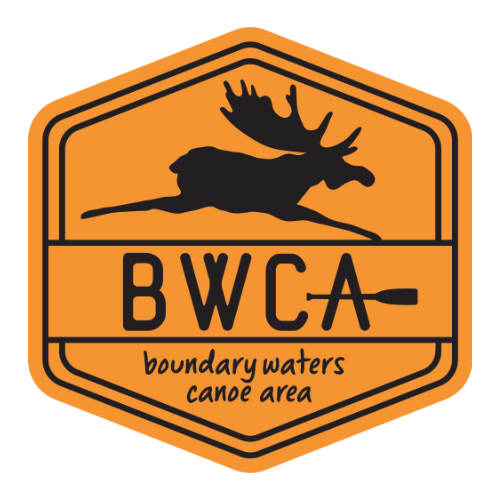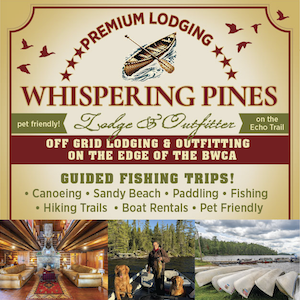|
 Boundary Waters Quetico Forum
Boundary Waters Quetico Forum Quetico Forum Quetico Forum Unmarked campsite clues and hunting tips Unmarked campsite clues and hunting tips
|
Author
Text
08/20/2024 11:34AM
There are lots of unmarked sites in Quetico. I have stumbled upon them, but usually plan my travel route based on known (marked) sites. I could potentially allow for more "campsite hunting" time in my travel plans. But to aid in that hunting process...
What are some of your tips or techniques for anticipating probable locations for unmarked sites based solely on a map? Topographic line patterns? Other cues that could be gleaned ahead of time? Or is it something that is really only possible to anticipate once you are on the lake and in proximity to a potential site?
Visual cues visible at a distance while on the water are definitely useful, am I missing any?
* Rock outcroppings
* Flatter, more open looking areas
* Shadowy holes in the treeline along the shore
* An obvious landing
* Presence of fire ring
What are some of your tips or techniques for anticipating probable locations for unmarked sites based solely on a map? Topographic line patterns? Other cues that could be gleaned ahead of time? Or is it something that is really only possible to anticipate once you are on the lake and in proximity to a potential site?
Visual cues visible at a distance while on the water are definitely useful, am I missing any?
* Rock outcroppings
* Flatter, more open looking areas
* Shadowy holes in the treeline along the shore
* An obvious landing
* Presence of fire ring
Reply
Reply with Quote
Print
Top
Bottom
Previous
Next
08/20/2024 12:13PM
Hey, apk--
Like you, we sometimes happen onto a campsite, sometimes a very nice one, that doesn't show up on the map info we've collected through the years. (We carry a 1992 Quetico Foundation map that we've added portage, campsite, and other info to.) Often the need to get rid of some coffee gets us to a spot where we can get out of the canoe, and then we discover an old fire ring or other evidence of use. If it's nice enough, we add it to our map. Your list includes most of the features that attract us to explore a potential site; we've also seen small shore-line cairns marking some sites.
TZ
Like you, we sometimes happen onto a campsite, sometimes a very nice one, that doesn't show up on the map info we've collected through the years. (We carry a 1992 Quetico Foundation map that we've added portage, campsite, and other info to.) Often the need to get rid of some coffee gets us to a spot where we can get out of the canoe, and then we discover an old fire ring or other evidence of use. If it's nice enough, we add it to our map. Your list includes most of the features that attract us to explore a potential site; we've also seen small shore-line cairns marking some sites.
TZ
If you want to go quickly, go alone. If you want to go far, go together. African Proverb
08/20/2024 12:51PM
My maps are full of markings that I've added while doing research online for routes, portage information and campsite locations. No map is 100% perfect, but research is fun to do, especially in the "hard water" season when making plans for the next trip during "soft water" season. :)
There are lots of veteran Q paddlers on this board. Ask questions and the answers will come.
There are lots of veteran Q paddlers on this board. Ask questions and the answers will come.
"Keep close to Nature's heart, yourself; and break clear away, once in a while, and climb a mountain or spend a week in the woods. Wash your spirit clean." ~ John Muir
08/20/2024 03:18PM
I've seen a lot of those shoreline feature you describe only to discover they're head fakes. If anything, I have found that most of the "low-rent" sites I've discovered from research in the off season are low-rent for a reason. They are largely unused, overgrown and generally not inviting.
08/20/2024 07:28PM
I look for signs of wear in the vegetation. Flattened grass, a ledge rock with lichens worn off of it. You can really spot human wear a long way off. Won't help with a camp that hasn't been used in years, but pretty easy to spot the used ones.
08/21/2024 09:21AM
It’s fun to find unmarked sites.
I think I looked on Ted Lake one day and we found the 2 main sites, one was well used but still nice, but we saw signs of at least 5 more in the same vicinity. Some must of been used 50+ years ago. It’s hard to imagine them actually working as a site, but there were clear OLD fire rings and the forest can reclaim an area fast. Although one was on a slope so maybe it was an old shore lunch site, but didn’t make sense as the fire ring was way back in the woods. Probably just didn’t find the ild tent pad sites.
T
I think I looked on Ted Lake one day and we found the 2 main sites, one was well used but still nice, but we saw signs of at least 5 more in the same vicinity. Some must of been used 50+ years ago. It’s hard to imagine them actually working as a site, but there were clear OLD fire rings and the forest can reclaim an area fast. Although one was on a slope so maybe it was an old shore lunch site, but didn’t make sense as the fire ring was way back in the woods. Probably just didn’t find the ild tent pad sites.
T
“Many go fishing all their lives without knowing that it is not fish they are after.” Henry David Thoreau
08/28/2024 09:14AM
You can camp where ever you'd like in Question but much better to use existing campsites from a LNT point of view. Also much easier to use existing sites - cleared tent pads, a fire ring usually, hopefully a landing. The rarely used ones are my favorites.
08/28/2024 09:31AM
billconner: "You can camp where ever you'd like in Question but much better to use existing campsites from a LNT point of view. Also much easier to use existing sites - cleared tent pads, a fire ring usually, hopefully a landing. The rarely used ones are my favorites."
Okay. That makes sense. I know I've watched videos of Quetico trips and canoeist were consulting maps for campsite locations.
Reply
Reply with Quote
Print
Top
Bottom
Previous
Next
Subscribe to Thread
Become a member of the bwca.com community to subscribe to thread and get email updates when new posts are added. Sign up Here








 Search BWCA.com
Search BWCA.com
 Donate
Donate 